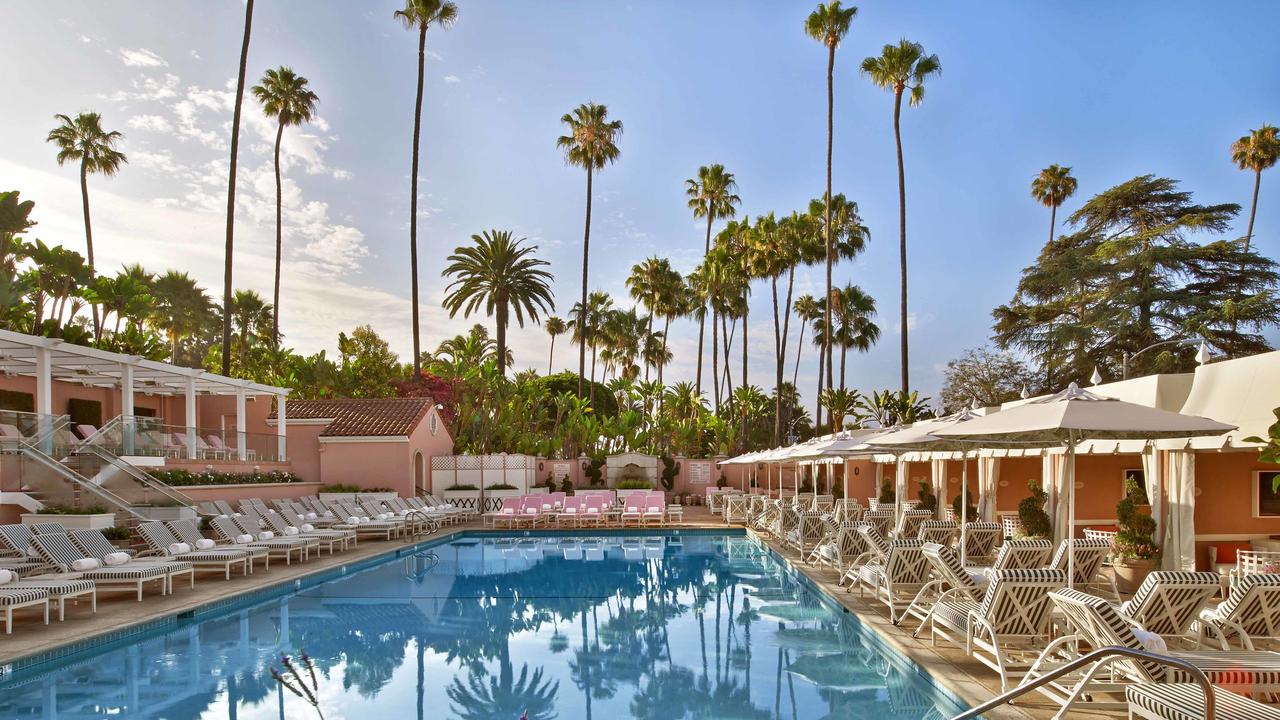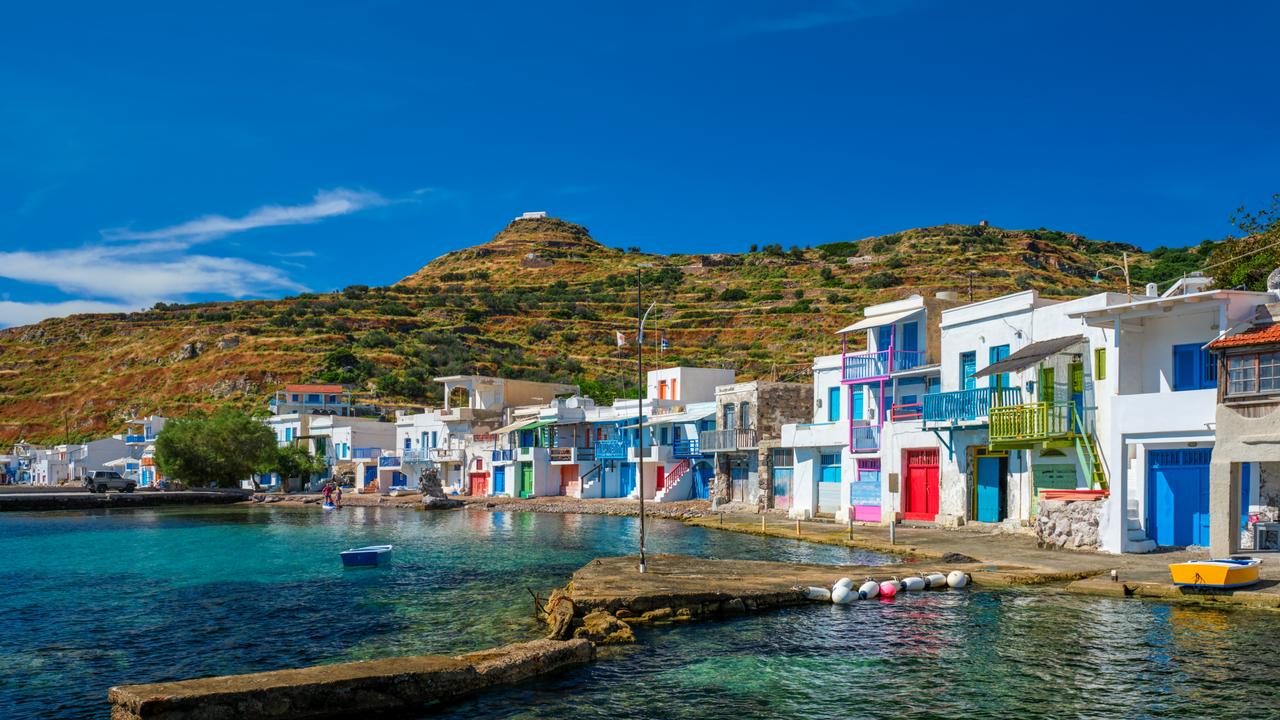Where to stay in Bodrum,Turkey
Bodrum is a town on the Aegean with something for everyone, from all-night partying to all-day serenity. The trick is choosing between the two.
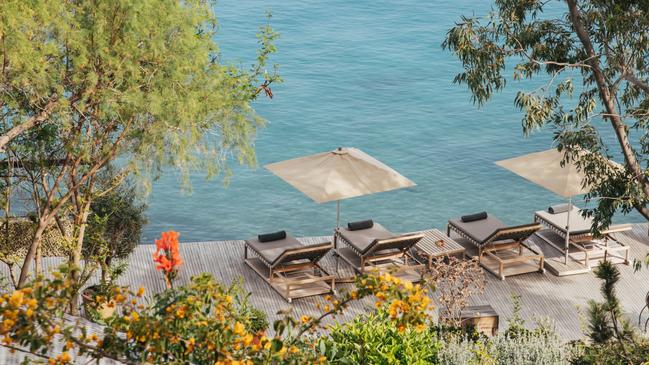
The Turkish Riviera is a magnet for extremes: Gypset bohemian wayfarers and the superyacht brigade mingle here. An hour’s flight south of Istanbul and within sailing distance of several Greek islands including Kos, the Bodrum peninsula juts into the Aegean like a sectioned pomegranate. I visited at the height of summer a decade ago and fell under its bacchanalian spell. At Macakizi, a seminal hotel, the days unfolded at an indolent pace. Long mezze lunches of stuffed mussels, grilled octopus and vermilion rosé were followed by afternoons splayed out at its beach club and evenings revelling at its open-air bar. It was a sun-soaked haven as cosmopolitan as Mykonos, Formentera or Hvar. And sleep was optional.
Now that I’m somewhat more, ahem, “seasoned”, I’m intuitively drawn to destinations where I can combine socialising and solitude, tuxedo or sarong. The choice needs to be there. Returning to Bodrum in late April I got to have my baklava and eat it, too. The solution was as simple as staying at two markedly different lodgings. Macakizi and Amanruya are almost neighbours in this idyllic setting of bustling villages, secret coves and seafood restaurants, yet they are poles apart in temperament. The former is playful, eclectic and boisterous, the latter refined, rarefied and languorous. They made an ambivert’s ideal pairing.
On the cusp of Europe’s summer, I headed first to Amanruya in search of seclusion. “Ruya” is the Turkish word for dream and one is immediately plunged into a rapturous reverie on arrival. Guests are ushered past Anatolian walls with perforated patterns and a domed gallery filled with kaleidoscopic carpets, then up a flight of steps before arriving at an infinity pool flanked by a cluster of dining pavilions. There was nary a soul in sight. Around me were a series of apricot-coloured structures, hushed spaces with refined furnishings, fringed by pines. It was as though I had wandered into one of Cézanne’s sensual landscapes with their colour gradations and expressive brushstrokes.
-
Explore the world’s leading cultural hubs and inventive design destinations in the latest edition of Travel + Luxury magazine, available online now.
-
The Aman group, known for consistently immaculate resorts, debuted the hotel in 2012 and it was recently spruced anew. Amanruya is composed of 36 freestanding stone cottages arranged like a traditional albeit patrician village and enfolded in age-old olive groves. The late Turkish architect Turgut Cansever, who acquired the site in 1970 and added a series of houses that synthesise Ottoman, Byzantine and Greek styles, planted the original seed. The design was executed by Cansever’s daughter, Emine, and her husband, Mehmet Ogun. “It is not dominated by the rational but the irrational,” Emine once observed of the splendid project. The stone edifices flow into each other like a Byzantine enigma.
At first, I was mystified by the labyrinthine layout, but once I yielded to its unpredictable pathways it felt meditative. I began to appreciate the striated markings in the handmade walls, the metal bells strung on doorways, and the sweet melodies of songbirds. The resort is set on a hill and slopes down towards Mandalya Bay. On my first afternoon I made my way along a rustic path enlivened with pink wildflowers and yellow spartium – guests can also hail a buggy from their room – to a pebble-strewn beach with crystal-clear water. Oya Sahin, a staffer with a beatific smile, made me a herbaceous Basil Smash, with gin, lemon juice and basil leaves. Lunch brought fennel-laced seafood salad and cumin-spiked kebabs, the meat grilled to smoky delectation by virtuoso chef Cihan Beyit. A walk to the water and lunch was an immersive experience in itself, but I could have done more.
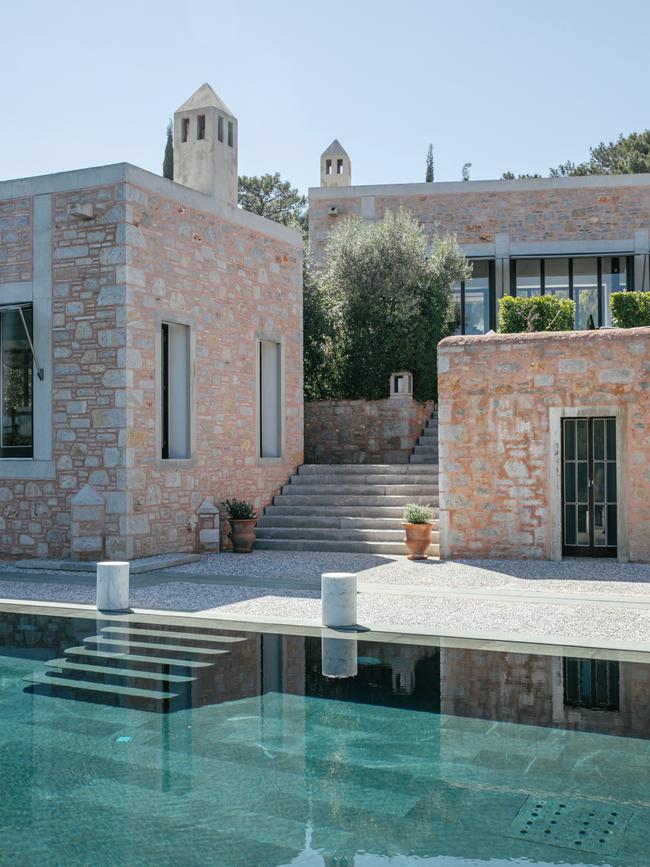
Amanruya guests can sign up for daytrips, including sailing on a gulet, exploring Mumcular for its pottery artisans and Etrim with its carpet weavers, or embarking on a full-day foray to ancient Ephesus. Tempting, but I couldn’t tear myself away. The bubble of serenity was punctured on one occasion, when a passing yacht paused at the bay disgorging pulsating music and sputtering laughter. A brassy bikini-clad woman swam ashore, declaring that she sought some local fizz to toast the newlyweds aboard their pleasure craft. A bottle of Vinkara Yasasin, a sparkling wine from Ankara, was rustled up and off she went.
“Are they Belgian?” one indignant guest sniffed as he strolled back to his cottage. Eventually, I followed his lead. The villas have pools carved from diabaz granite, terraced gardens scented by thyme, and tastefully decorated chambers appointed with mahogany wood and silvery marble. Ottoman flourishes include Bursa arches, mangal charcoal fireplaces and hammam-style bathrooms with a pierced cupola known as “elephant eyes”. A pergola with a daybed was an exquisite reading nook. Stuffed with pillows and shaded with billowing linen, it put me in the mind of Süleyman the Magnificent – in sunglasses.
On my last morning, I ventured into Bodrum town. The hamlet is dominated by Bodrum Castle, built by crusaders around 1402 from the ruins of the Mausoleum of Halicarnassus. It was reborn in the ’60s as the Bodrum Museum of Underwater Archaeology, with artefacts and amphorae plucked from shipwrecks. The bazaar town is a convivial mix of souvenir shops, fish eateries and bars like Yula that spill out onto the sea. Fashionable stores exist, too. Socrates, named for the Brazilian soccer player not the philosopher, is a vibrant source of chic silk and cotton dresses by designers Hulya Cenikli and Murat Goktas. And Mustafa is an Aladdin’s cave of Turkish carpets, patchwork kilims and dazzling hand-embroidered pillows from Uzbekistan. Handmade leather sandals are another local specialty.
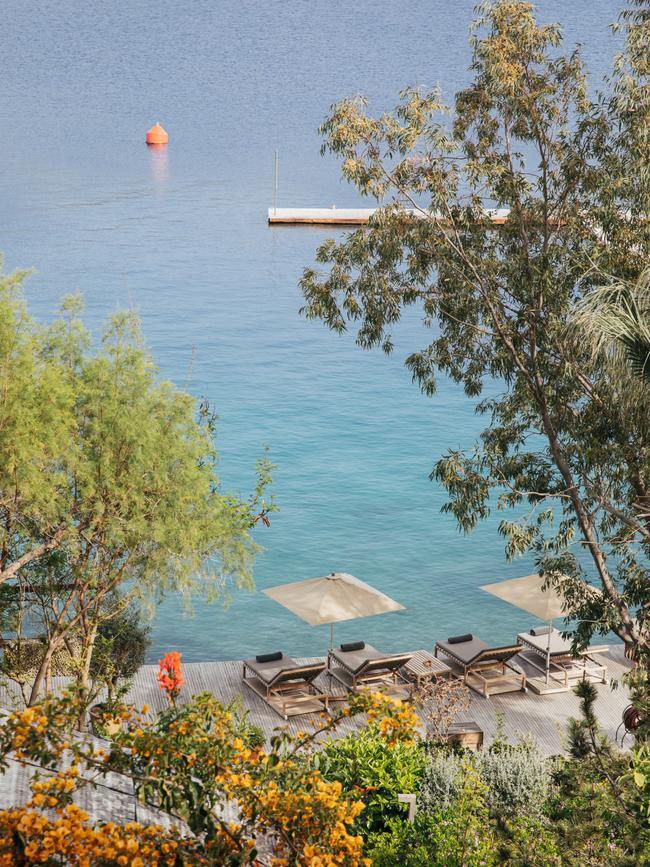
Exploring the humming town was the perfect transition to Macakizi in the village of Turkbuku. By then I was ready to mingle. The 74-room hotel tumbles down to the water alongside a tangle of walkways garlanded with bougainvillea, oleander and olive trees. Host Aysha Tuncel pointed out recent updates, including a screening room, a retail store, and a gourmet kiosk offering house-made charcuterie, goat’s-milk cheeses and native wines to those alighting from boats. Most notably, the V-shaped beach club was widened to accommodate 280 sunbeds. Guests were already sprawled out on the wooden pier over the water – Turkbuku doesn’t have sand beaches – while others lunched on an outdoor terrace. Moored megayachts bopped on the water and daytrippers arrived via motorboat.
Before Macakizi, Tuncel worked at Amanruya, and I was onto something, apparently, by dividing my time between the two. “A lot of people stay at both,” she said. “We have a different relationship with our guests – they all know Sahir.” She was referring to owner Sahir Erozan, a networking powerhouse in a perpetual cloud of cigar smoke. Erozan’s late mother, Ayla Emiroglu, pioneered the notion of a laid-back Bodrum getaway in 1977. Back then, she launched a small artists’ retreat before it was relocated to its current location in 2000. Macakizi means “queen of spades”, which was Emiroglu’s nickname. Her insignia appears everywhere at the resort, from the menus to the towels.
Another trump card in Macakizi’s deck is Andrew Jacobs, its gregarious Australian general manager. Jacobs cut his teeth at Hilton Hotels in the early noughties, flitting from several antipodean properties to postings in Tel Aviv, Athens, and eventually Istanbul. A living Filofax, Jacobs is on a first-name basis with VIPs from Sorrento to Santorini. “The key to Macakizi is an international crowd – many people have been coming here for 15 or 20 years,” he told me at dinner that night in the hotel’s glass-clad, art-filled dining room bustling with patrons. Jacobs, a bon vivant, prefaced the meal with, “I hope you like caviar.”
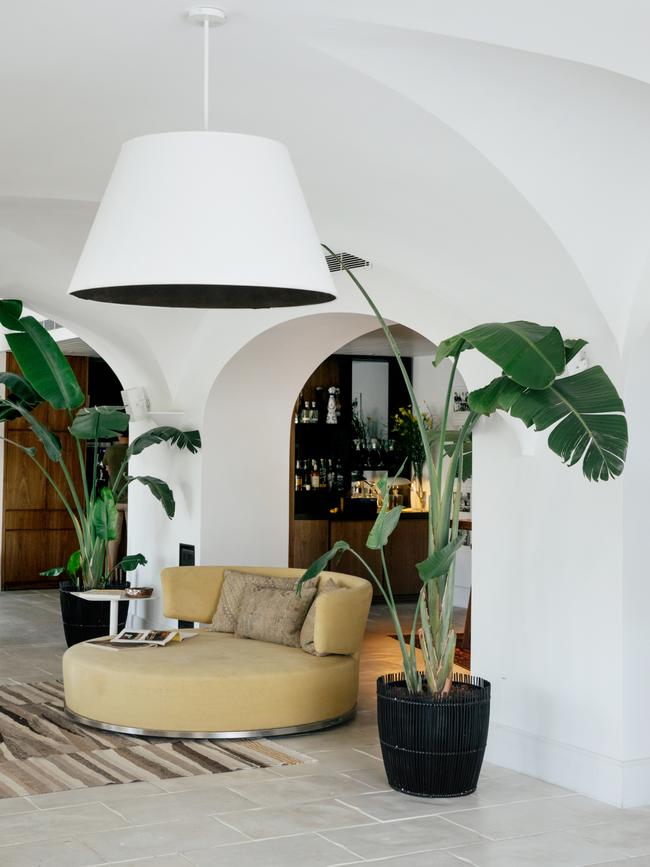
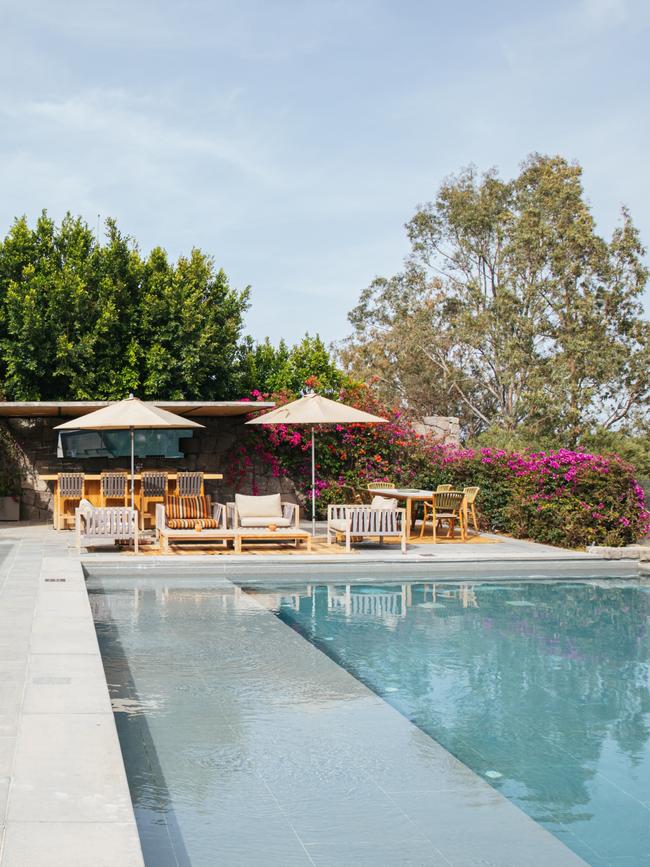
Bodrum is lately becoming a year-round destination, and the hotel had just remained open for its first winter season. Macakizi is rightly credited for kickstarting Bodrum’s jet-set era. In recent years, the destination has undergone a swish hotel renaissance with the arrival of Mandarin Oriental, Nikki Beach and Edition. Across the bay at Kaplankaya is Six Senses, which opened in 2018. A new Four Seasons is on the way and there are rumours that Bulgari will join, too. To up the ante, Erozan and Jacobs unveiled Villa Macakizi earlier this year – a jaw-dropping 10-room residence a few minutes away by sea. The next morning, Jacobs escorted me there on one of the resort’s boats. Aimed squarely at the one per cent – Bill Gates had his birthday party here – the residence comes with a price-tag of €50,000 per day.
Interior designer Barbara Pensoy has tricked out the abode with textural rugs, hand-painted tiles, Loro Piana linen, and Italian furniture. Progressive art stems from Erozan’s collection, including a data sculpture by Refik Anadol playing on a screen. Pampered guests have access to expansive lounge areas, an outdoor deck with kitchen, private pool, hammam spa, and a well-stocked cellar lined with rare back vintages of Dom Pérignon. It’s equipped with 35 staff, including a private chef, Venetian Carlo Bernardini, and 24-hour butler service. “Superyachts can pull in at the two pontoons and helicopters can land here,” said Jacobs, surveying the manicured grounds. It was a couple of months before he would host a soiree for his goddaughter, Nadia Fairfax, and her husband, Michael Wayne. “Half of Toorak is coming,” he said.
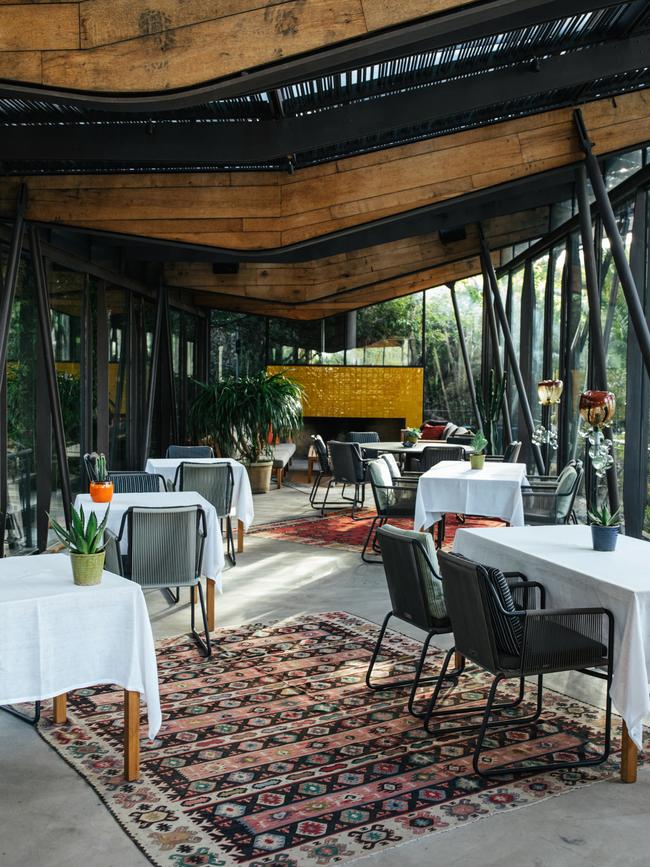
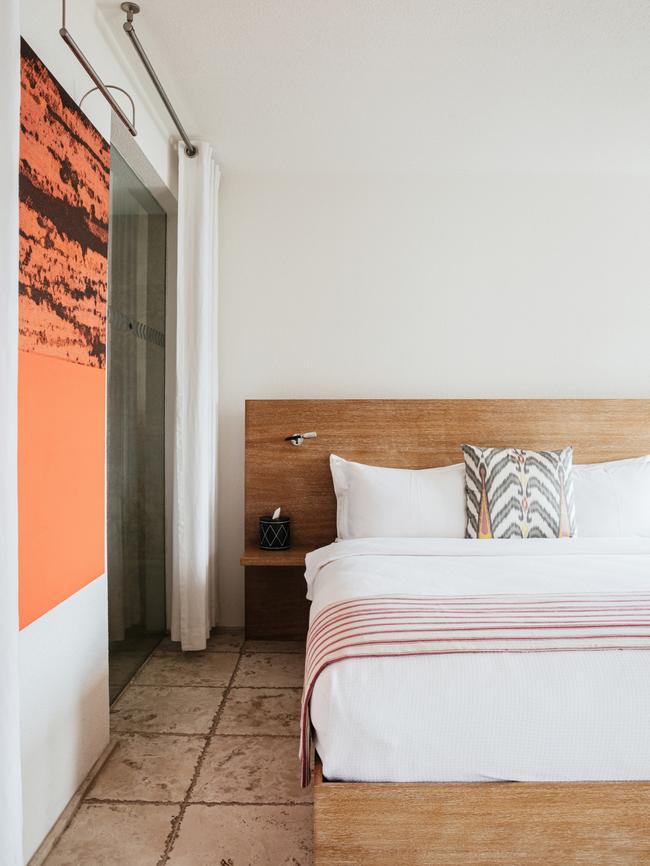
Back at the resort, I made a beeline for the terrace restaurant overlooking the water. Selim, the resident ginger cat and imperious resort boss, was sprawled across the bar. Italian sommelier Vincent Lopresto, who learned English waiting tables for a year at Cumulus Inc in Melbourne, poured me a fragrant biodynamic sauvignon blanc from local maker 7 Bilgeler. The call to prayer could be heard from across the bay, but it blended seamlessly with catchy Arabic electropop in the hotel. On my last visit I developed an obsession with the lahmacun, the Turkish pizza. Here, prepared by chef Aret Sahakyan, it was ultra-crisp, well-seasoned, laced with greens and served with lemon – it eclipsed all other versions.
The impossibly composed chef has helmed the kitchen since 2000, and established its culinary bona fides. During summer, he caters to 500 people for lunch and 300 for dinner. “We’re always evolving,” he told me. Lately, he has been working with nearby organic farms to cultivate endives, parsnips, Swiss chard, white asparagus and radishes. Hand-picked morels grace pasta dishes or are paired with baby goat. Sahakyan still gets excited about local finds such as “cirsi” – wild greens that resemble young leeks. Local seafood including prawns, octopus, sea bass and grouper round out the menu. Sahakyan said he’s developed a baklava stuffed with pine nuts and pecans instead of walnuts and urged me to try it. Ethereal.
Down at the beach club, I settled in for the afternoon under a bleached sky. A light breeze and moveable sun-shades kept things blissful. A small army of beaming staff delivered drinks, towels and sunscreen to the assembled guests. To my left were a gaggle of stylish Turkish women, gold jewellery and bronze limbs glinting in the sun. On my right, an excitable gent sent up a drone, but was asked to land it. Ambience is a delicate entity. Like the ducks balancing on the skin of the sea, the happiest guests were not capturing the moment. Instead they settled into the ultimate luxury of calm: the state of being elegantly unruffled.

